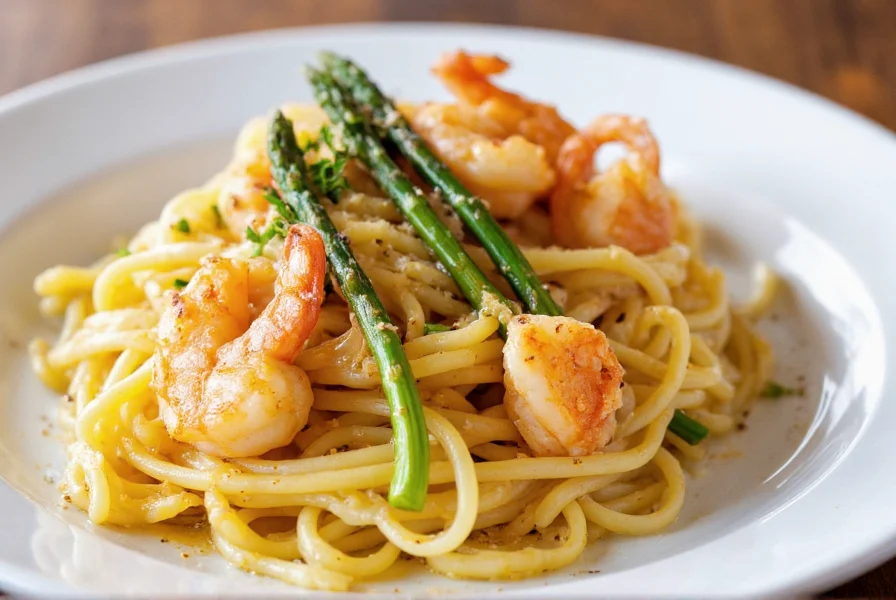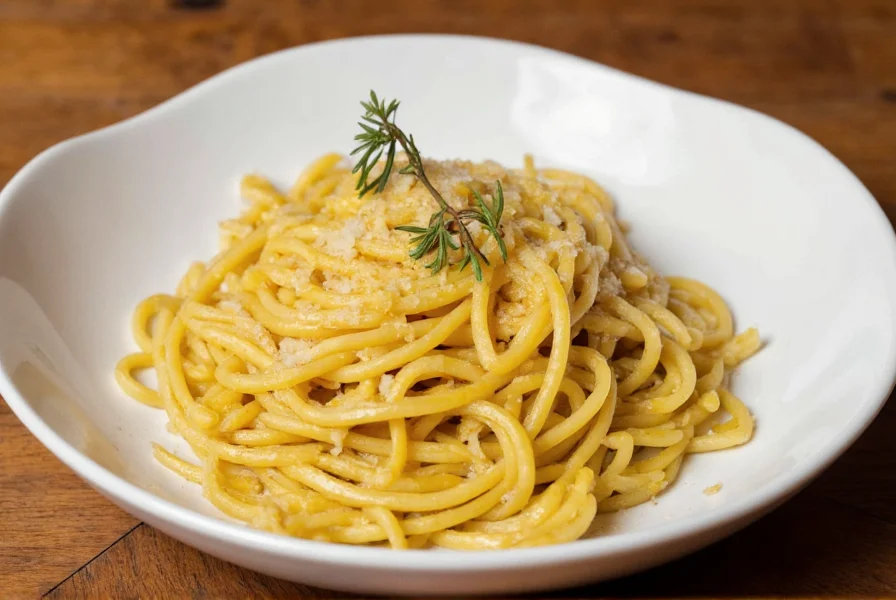When executed properly, lemon pepper pasta delivers a refreshing culinary experience that showcases how simple ingredients can create extraordinary flavor. This dish works because the acidity of lemon cuts through the richness of pasta while black pepper adds complexity and warmth. The magic happens when freshly cracked pepper releases its volatile oils, marrying with lemon zest's aromatic compounds to create a flavor profile greater than the sum of its parts.
The Essential Components of Perfect Lemon Pepper Pasta
Creating exceptional lemon pepper pasta requires understanding each element's role. Unlike heavy cream-based sauces, this preparation relies on emulsion science—where fat (olive oil or butter), liquid (pasta water), and acid (lemon juice) combine to form a silky coating for the noodles. The starch in reserved pasta water acts as a natural thickener and binder, crucial for achieving that restaurant-quality finish without excess oil.
| Ingredient | Function | Quality Indicator |
|---|---|---|
| Fresh lemon juice & zest | Provides bright acidity and aromatic oils | Deep yellow zest, heavy for size |
| Freshly cracked black pepper | Delivers complex heat and floral notes | Visible cracked pieces, aromatic when crushed |
| High-quality pasta | Provides ideal starch content for sauce adhesion | 100% bronze-die extruded, rough texture |
| Reserved pasta water | Creates emulsion and adjusts consistency | Cloudy appearance from starch |
Step-by-Step Preparation Guide
Follow these professional techniques for restaurant-quality results at home. The key to exceptional lemon pepper pasta lies in timing and temperature control—adding lemon juice at the right moment preserves its bright flavor without becoming bitter.
- Cook 12 oz (340g) of high-quality spaghetti or linguine in well-salted water until just shy of al dente
- Reserve 1½ cups of starchy pasta water before draining
- Immediately toss drained pasta in a warm bowl with 3 tbsp extra virgin olive oil or unsalted butter
- Add ¼ cup reserved pasta water and 2 tbsp freshly squeezed lemon juice while vigorously tossing
- Incorporate 2-3 tbsp finely grated Parmesan and 1½ tsp freshly cracked black pepper
- Adjust consistency with additional pasta water as needed (3-4 tbsp)
- Finish with lemon zest, additional pepper, and optional red pepper flakes

Avoiding Common Preparation Mistakes
Many home cooks encounter issues with lemon pepper pasta that diminish its potential. Adding lemon juice too early causes bitterness as heat breaks down its delicate compounds. Using pre-ground pepper lacks the aromatic complexity of freshly cracked varieties. Overcooking the pasta prevents proper sauce adhesion—al dente texture is essential for the sauce to cling properly.
Temperature control proves critical: the residual heat from properly cooked pasta should be sufficient to emulsify the sauce without requiring additional cooking. Adding cold ingredients to hot pasta shocks the system, preventing proper emulsion. Always warm your serving bowl beforehand to maintain ideal serving temperature.
Variations for Different Dietary Preferences
Lemon pepper pasta adapts beautifully to various dietary needs while maintaining its essential character. For a creamy lemon pepper pasta variation, substitute 2 tbsp of the olive oil with mascarpone cheese, whisking it with the pasta water before incorporating. Vegetarians can boost protein with ½ cup of toasted pine nuts or walnuts. Those seeking healthy lemon pepper pasta options can replace half the pasta with spiralized zucchini noodles.
Gluten-free adaptations work well with high-quality rice or corn pasta, though you'll need to reduce cooking time by 2-3 minutes and use slightly less pasta water. For a lemon pepper pasta with shrimp preparation, sauté 12 oz of shrimp in olive oil with garlic until just pink, then remove before completing the pasta, adding them back at the end to prevent overcooking.

Perfect Pairings and Serving Suggestions
This versatile dish pairs beautifully with grilled vegetables, particularly asparagus or broccolini. The acidity cuts through rich proteins, making it an excellent companion to pan-seared chicken or fish. For wine pairings, select crisp whites like Pinot Grigio or unoaked Chardonnay that complement rather than compete with the lemon notes.
When plating, use the "noodle nest" technique: twirl pasta with tongs into a compact mound, leaving some strands artfully draped over the sides. Garnish with additional cracked pepper, lemon zest, and a delicate twist of lemon wedge. The visual presentation enhances the anticipated flavor experience before the first bite.
Storage and Reheating Best Practices
While lemon pepper pasta shines when freshly prepared, proper storage maintains quality for up to three days. Cool completely before transferring to an airtight container, reserving extra pasta water for reheating. Never refrigerate with lemon juice already incorporated—add fresh lemon when reheating to preserve brightness.
For optimal reheating, place pasta in a skillet with 1-2 tbsp water or broth. Heat over medium-low while gently tossing until warmed through (2-3 minutes). Finish with fresh lemon juice, zest, and pepper. Microwave reheating often results in uneven temperature and diminished texture—stovetop revival preserves the dish's integrity.
Frequently Asked Questions
Can I make lemon pepper pasta without Parmesan cheese?
Yes, you can create excellent dairy-free lemon pepper pasta by substituting Parmesan with nutritional yeast (3 tbsp) for umami depth, or using a small amount of capers for salty complexity. The dish maintains its essential character without cheese, though Parmesan does contribute to the sauce's creamy texture through its binding properties with starch.
Why does my lemon pepper pasta taste bitter?
Bitterness typically occurs when lemon juice is exposed to high heat for too long, causing its compounds to break down. Always add lemon juice off direct heat, using the residual warmth of the pasta to incorporate it. Another common cause is including too much white pith from the lemon zest—only the colored outer layer contains desirable oils, while the white pith is intensely bitter.
What's the best type of pasta for lemon pepper preparation?
Long, thin strands like spaghetti or linguine work best as their surface area captures the light sauce effectively. Bronze-die extruded pasta provides a slightly rougher texture that holds the emulsified sauce better than smooth, Teflon-extruded varieties. Avoid very thick pastas like fettuccine which can overwhelm the delicate lemon pepper balance.
How can I enhance the pepper flavor without making it too spicy?
Use freshly cracked Tellicherry or Lampong peppercorns, which offer complex floral and woody notes rather than just heat. Crack them coarsely to maximize surface area while controlling intensity. For deeper pepper flavor without additional heat, toast whole peppercorns lightly before cracking. The key is using high-quality pepper—pre-ground varieties lose their volatile oils and complex flavor profile within weeks.
Can I prepare lemon pepper pasta ahead of time for meal prep?
For optimal results, prepare components separately. Cook and cool the pasta with a light oil coating, store lemon juice/zest separately, and keep cracked pepper in an airtight container. Combine everything just before serving, using warm reserved pasta water to create the emulsion. Pre-mixed lemon pepper pasta loses its bright character as the acid continues to break down the pasta structure over time.











 浙公网安备
33010002000092号
浙公网安备
33010002000092号 浙B2-20120091-4
浙B2-20120091-4